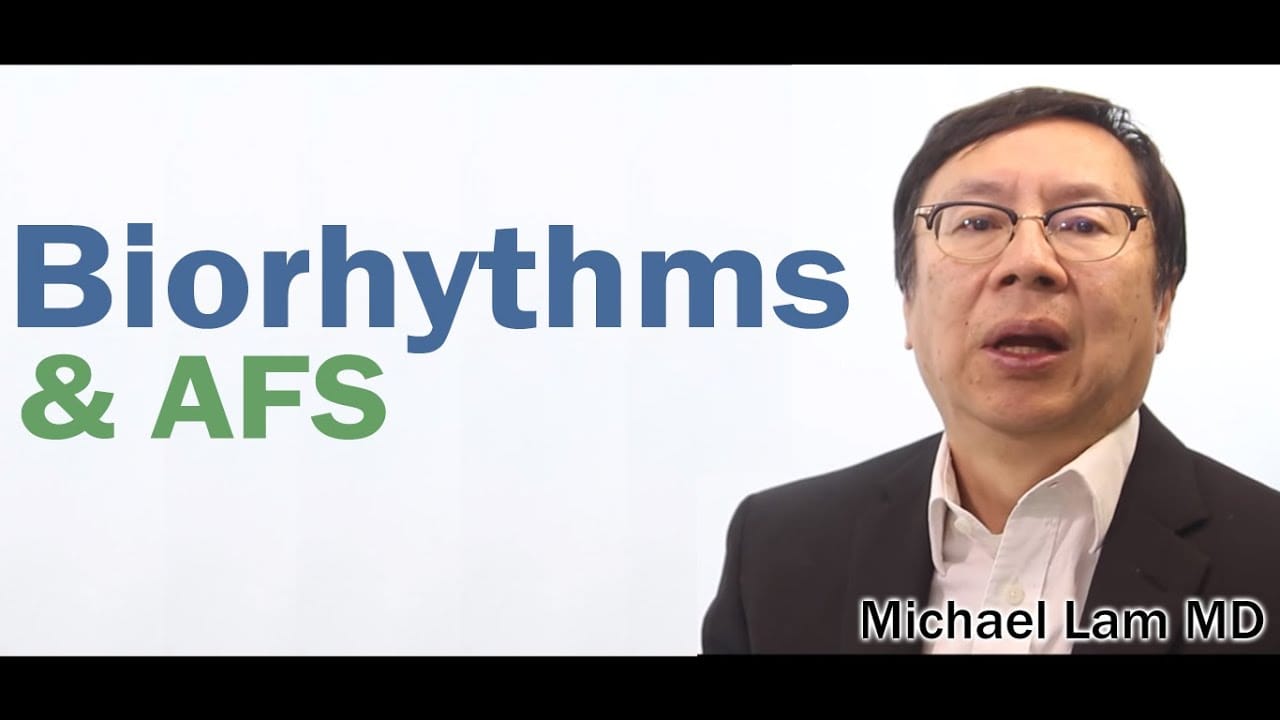
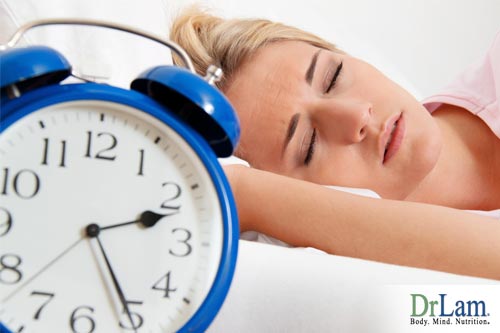 Our biological clock (BC) refers to the natural rhythm that certain bodily functions and activities follow. This includes our body temperature, level of alertness; sleep schedule, and endocrine activity. The biological clock or biological rhythm usually repeats in predictable cycles of time. The menstrual cycle, for example, occurs every twenty-eight days. Rhythms that follow a twenty-four hour cycle are often referred to as circadian rhythms, such as our sleep–wake cycle. Our brain helps maintain and control our internal biological clock that regulates these rhythms.
Our biological clock (BC) refers to the natural rhythm that certain bodily functions and activities follow. This includes our body temperature, level of alertness; sleep schedule, and endocrine activity. The biological clock or biological rhythm usually repeats in predictable cycles of time. The menstrual cycle, for example, occurs every twenty-eight days. Rhythms that follow a twenty-four hour cycle are often referred to as circadian rhythms, such as our sleep–wake cycle. Our brain helps maintain and control our internal biological clock that regulates these rhythms.
There are external factors that can have an influence on our biological clock, for example, sunlight and certain drugs like caffeine that can affect our sleep schedule. Disorders can also develop when our natural biological clock is interrupted or disturbed. They include:
Adrenal Fatigue Syndrome (AFS) is a neuroendocrine condition brought on by stress. The main symptom is fatigue despite normal laboratory tests. As AFS progresses through its four stages from mild to severe, biological clock disruptions tend to be more pronounced. Most advanced AFS suffers therefore have severe insomnia. In advanced stages of AFS, many sufferers are simply unable to fall asleep (also called sleep onset insomnia or SOI) or stay asleep (also called sleep maintenance insomnia or SMI) because they feel both wired and tired. In very severe cases, catnaps are the only way the patient can get any sleep, which means they can end up being sleep deprived for days at a time. Scientific research has revealed that a great many of these cases are caused by biological clock disruptions secondary to hormonal and neurotransmitter (NT) dysregulation.
This paper examines the role biological clock plays in insomnia in a setting of advanced AFS and suggests natural approaches and solutions.
Chronobiology is an area of biology examining periodic or cyclic occurrences in living organisms and their synchronization with the universe and solar related rhythms. These cycles are called the biological clock (BR). Research in this area involves the study of other fields such as neurology, space medicine; sleep medicine, endocrinology, and psychology. This is not the same as biorhythm, which is really just a pseudoscience attempting to explain cyclic variations in the behavior of humans based on emotional and physiological cycles and has nothing to do with chronobiology.
The duration and timing of biological activity in organisms vary among many of the essential biological processes. The most vital rhythm in chronobiology would be the circadian rhythm. This is roughly a 24-hour cycle indicated by physiological processes in all these different living organisms. Circadian rhythms control:
All this is regulated and controlled by the circadian clock, which is a collection of nerves in the region of the brain known as the hypothalamus. Other forms of biological clocks include:
 Animals, plants, cyanobacteria and fungi have all been observed having biological clocks. Even though these different biological clock are internally controlled, there are some external factors that can influence their regularity.
Animals, plants, cyanobacteria and fungi have all been observed having biological clocks. Even though these different biological clock are internally controlled, there are some external factors that can influence their regularity.
Factors that can alter the biological clock greatly include changes in light brought about by seasonal transitions, changes in work schedule involving different sleep schedules, severe or unrelenting stress, jet lag, toxic overload, neurotransmitter imbalances, and receptor site disorders. The factors also cover chronic conditions such as dysregulation of the neuroendocrine system or Adrenal Fatigue Syndrome, dysregulation of the autonomic nervous system, which includes an overabundance of norepinephrine (known as sympathetic overtone), an overabundance of adrenaline (reactive sympathetic response, also known as adrenaline dominance), and polluted extracellular matrix. These factors reach into areas of glucose intolerance, metabolic syndrome, reactive hypoglycemia, excessive metabolic build-up from liver congestion, improper detoxification, reaction to retoxification, unresolved stealth infection, aging, weight loss, pregnancy, OAT axis disruption, HPA axis dysregulation, paradoxical results from medication and/or natural remedies including herbs, excessive or prolonged use of antibiotics, pH imbalance, caffeine, severe infection, and weak constitution.
Just about any condition that brings about an imbalance in internal homeostasis could trigger a disruption in the biological clock. The onset could be gradual or acute. The classic presenting complaint is insomnia, indicating a disrupted biological clock. Some have reported a sudden case or onset of insomnia after experiencing an extremely stressful event or after taking a course of antibiotics. Others have reported a slow gradual onset that spans months when their sleep pattern became slightly disrupted but over time gradually worsen.
Disorders in biological clock can affect sleep–wake cycles, body temperature, the release of hormones and other vital bodily functions. They have been associated with:
Since very few clinicians are looking for biological clock disruptions when examining their patient complaining of insomnia, it is hardly ever recognized as a vital problem until the biological clock disruption becomes severe and entrenched. Such is the case when associated with advanced AFS.
The most common presenting complaint from patients suffering from biological clock disruption is insomnia. Instead of trying to determine the root cause of the sleep disturbance and restore proper biological clock as the ultimate long-term solution, most try to self navigate at first with sleep aids, such as melatonin or over-the-counter antihistamine. When the sleep aids fail stronger medications are taken. This usually works for a while, but eventually the body develops tolerance as well as dependency.
To make matters worse, most sufferers of chronic insomnia invariably have low energy during the day. They are frequently prescribed stimulants to increase energy to help them make it through the day after the effects of coffee diminish. These compounds include DHEA, testosterone, vitamin B12, pregnenolone, and various herbs like green tea, rhodiola, maca, ashwagandha, and ginseng. Coffee intake has usually already become a habit by now. Patients are usually hyped up throughout the day but later wired and unable to calm down and relax at bedtime.
 Inevitably, stronger prescription sleep medication is used to induce sleep over time. Without solving the underlying biological clock disruption, sleep forced on by medication only lasts a few hours and sufferers now awaken frequently in the middle of the night unable to return to sleep. Those with weak constitutions may have metabolic disruptions in the middle of the night because of biological clock imbalances. They awaken after a few hours of sleep experiencing heart palpitations, perspiration, and anxiety. In severe cases, visits to the ER with extensive workups only result in being pronounced well and sent home. Typically sufferers wake up in the middle of the night and are not able to return to sleep easily and when morning dawns they do not feel at all refreshed or ready to take on the new day. They drag themselves through the day only to repeat the same insomnia cycle the following night.
Inevitably, stronger prescription sleep medication is used to induce sleep over time. Without solving the underlying biological clock disruption, sleep forced on by medication only lasts a few hours and sufferers now awaken frequently in the middle of the night unable to return to sleep. Those with weak constitutions may have metabolic disruptions in the middle of the night because of biological clock imbalances. They awaken after a few hours of sleep experiencing heart palpitations, perspiration, and anxiety. In severe cases, visits to the ER with extensive workups only result in being pronounced well and sent home. Typically sufferers wake up in the middle of the night and are not able to return to sleep easily and when morning dawns they do not feel at all refreshed or ready to take on the new day. They drag themselves through the day only to repeat the same insomnia cycle the following night.
Left unattended, biological clock disruptions become more severe and chronic intractable insomnia becomes the norm. Many resort to only taking catnaps during the day and remain awake throughout the night for the most part. By now prescription, sleep medications don’t continue to work well and many have reached their maximum dosage. The patient is also typically maxed out on stimulants during the day. With no other options, their doctor concedes defeat and abandons the patient. By now their biological clock is severely disrupted. Fortunately, this clinical picture is not a frequent occurrence as it represents extreme situations. Unfortunately, sufferers in this state are left with no options and nowhere to turn for help. To restore biological clock, we first need to review how our internal master clock is involved.
There happens to be a master clock inside our brain that coordinates all our biological cycles to make sure they are synchronized. This is made up of a grouping of nerve cells called the suprachiasmatic nucleus (SCN). It contains approximately 20,000 nerve cells and can be found in the hypothalamus.
This is where the production of melatonin is controlled, which is the hormone that helps to bring on sleep. The SCN can be found right above the optic nerves. These nerves send messages from the eyes to our brain, which means the SCN gets information regarding incoming light. At night there is less light so the SCN instructs the brain to produce more melatonin to make us sleepy. Therefore more melatonin is produced and secreted at nighttime and ebbs during daytime. The presence of melatonin gives the brain the information it needs about the length of nighttime.
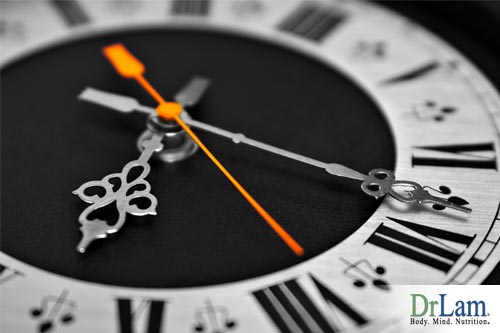 Neurotransmitters play a very big part in how the SCN functions in our brain. The strength of our circadian rhythms depends on how accurately our biological clock is functioning and how well it is integrated into the actions of thousands of separate cellular clocks contained within. Neurotransmitters are working in all areas of this system, during the input of information, within the clock itself, and in the efferent output needed for normal functioning of the clock.
Neurotransmitters play a very big part in how the SCN functions in our brain. The strength of our circadian rhythms depends on how accurately our biological clock is functioning and how well it is integrated into the actions of thousands of separate cellular clocks contained within. Neurotransmitters are working in all areas of this system, during the input of information, within the clock itself, and in the efferent output needed for normal functioning of the clock.
The phase markers used to measure the timing of the biological clock of mammals are:
Our daily circadian rhythm can be broken down clinically into seven sub-rhythms that follow one another.
This occurs from 6 – 9am. We stop secreting melatonin by about 7:30am. It is the body’s natural way of saying it is time to get up. To facilitate the awakening process, cortisol, an important anti-stress hormone secreted from the adrenal glands, rises during the early morning hours. Cortisol levels are at their peak around 8:30am.
Our heart rate and blood pressure rises as well in the early morning hours while our output of norepinephrine increases. This allows us to stand up from a horizontal position and move around physically so we can begin our day productively.
Our GI tract also has its active phase after awakening. The large intestine acts to let go physically as well as emotionally. Most can expect a bowel movement by around 9am. However, a much better time for this would be before 7am.
This occurs from 9am to noon. Most adults are busy at work during this time, with drawdown on our brainpower and physical reserve, depending on our activity. This is when our testosterone is at its highest output, which means we are on full alert by 10am. Traditional Chinese medicine claims the spleen pulls the needed nutrients from our food, transforming it into energy that is sent to other organ systems throughout our body during this time frame. If we experience bloating after meals, loose stools, low energy and crave sweets these symptoms indicate an imbalance. People who are weak or have AFS may become tired and anxious in the late morning hours.
Typically, a biological clock disruption tends to be more pronounced from 11am to noon, with symptoms indicating an imbalance such as:
This occurs from noon to 2pm. Most people look forward to lunch as a time to replenish their energy. After lunch, our small intestine starts working to help food assimilation. If the person has ingested too many carbohydrates at lunch, causing metabolic dysfunction, they could experience a food coma and start feeling sleepy after the meal.
If you have not consumed enough water throughout the morning, you will likely feel dehydrated during this part of the day. When you are out of balance, certain physical conditions may develop which can include bloating with gas or even vomiting and a duodenal ulcer.
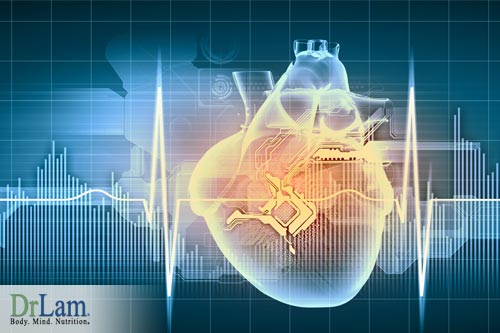
This occurs from 2 to 6pm. You are likely to experience a mid-afternoon slump in energy and focus and this typically occurs between the hours of 3 to 5pm. if you are weak.
The key is mid-afternoon between 2 to 4pm. After the immediate energy surge has exhausted itself, as in the case of AFS, fatigue returns. Your blood sugar levels may be within the normal range, but you feel lethargic. Those with metabolic issues may experience reactive hypoglycemia. During this time of day you can easily feel a drop in energy, especially if you have not consumed enough water and are dehydrated. When this imbalance occurs you may feel a burning sensation when urinating, develop a yeast infection or even urinary incontinence.
Our body is most coordinated at about 2pm. This is when our body’s cardiovascular system is performing most efficiently. Our muscles have warmed up and our level of stress is decreasing as the day’s end approaches. Our greatest muscle strength occurs around 5pm. This is the time of day when people are least likely to have a heart attack while exercising.
This occurs from 6 to 9pm, around dinnertime. The body reaches its highest temperature at 7pm. while the neurotransmitters responsible for carrying out the day’s activities are still going strong. Cortisol is gradually declining since mid-morning and continues.
As light begins to dim, the process of Dim Light Melatonin Onset (DLMO) begins around 9pm and can be detected in blood or saliva. Melatonin’s most prominent metabolite can be detected in the morning urine. Both DLMO and the midpoint, time wise of melatonin being present in the blood and/or saliva have been commonly used as circadian markers.
This occurs from 10pm to 2am. You are now suppressing any bowel movement as you begin your sleep cycle. During sleep, you cycle back and forth between REM and non-REM periods of sleep. Your lowest cortisol levels occur around midnight.
You begin with non-REM sleep then you experience a shorter time of REM sleep. The cycle then repeats. During REM sleep you will typically have dreams.
Non-REM sleep occurs in three different phases. Each phase lasts from five to fifteen minutes. You experience all phases before achieving REM sleep.
During the phases of deep non-REM sleep, your body repairs and regrows bone and muscle tissue, while the immune system becomes stronger.
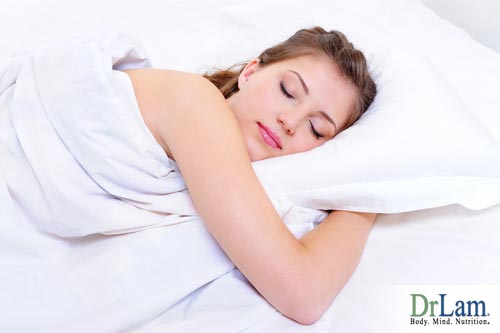 Rapid Eye Movement (REM) sleep is a stage of sleep when your eyes are quickly moving in different directions. This doesn’t occur during non-REM periods of sleep. Typically, people enter REM sleep around ninety minutes after first falling asleep. Each of the later REM sleep phases lasts longer, and the last one of the night can last up to an hour. Your breathing and heart rate becomes quicker.
Rapid Eye Movement (REM) sleep is a stage of sleep when your eyes are quickly moving in different directions. This doesn’t occur during non-REM periods of sleep. Typically, people enter REM sleep around ninety minutes after first falling asleep. Each of the later REM sleep phases lasts longer, and the last one of the night can last up to an hour. Your breathing and heart rate becomes quicker.
During REM sleep your brain increases in activity so you are able to have more intense dreams.
Most people when allowed to sleep for as long as they want will sleep for approximately nine hours. Age affects sleep however, for example newborns sleep twice as much as adults do. There are differences in the individual sleep requirements of people, and studies on twins reveal these differences may be in part genetic. As you age, you tend to sleep more lightly and not get as much deep sleep.
Your body should be completely immersed in your sleep cycles as the night continues on, reaching your deepest sleep around 2am.
This occurs from 2 to 6am. The body is now on automatic cruise control, resting and rejuvenating. The lowest body temperature is reached at about 5am. Cortisol levels start rising at around 2 to 3am with levels continuing to climb throughout the balance of the night until we awaken in the morning. Our level of alertness is at its lowest from 4 to 6am.
Metabolic dysfunction such as sugar imbalances, excessive stress, anger and resentment can cause excessive neurotransmitter (NT) releases, waking you up. If you’re not sleeping at this time, you can quickly become deficient. You may find that you wake up between 2 to 4am. if you have repressed anger or long standing resentment. Symptoms of liver imbalances include irregular menstruation, anemia, chronic fatigue, and headache. According to traditional Chinese medicine, liver cleansing takes place during this time. biological clock disruptions during this phase can lead to liver and extracellular matrix congestion.
According to the World Health Organization, a full 40 percent of the population worldwide suffers from some form of sleep disorder. Along with disruptions in sleep, or the inability to sleep, these circadian rhythm disturbances can change our body mass index as well as cause behavioral disorders.
Fundamentally we process incoming information on two different levels. Our conscious mind processes information in a serial manner, which is fairly slow. However, because we are aware and able to focus we are able to act voluntarily, performing functions like problem solving, moving our muscles, and communicating verbally with others.
When we are unconscious our mind is still processing incoming information and we can perform tasks that are familiar to us automatically. In this state our senses and neural pathways continue to rapidly register stimuli on multiple tracks simultaneously without us being consciously aware or knowing that all of this is going on. This is how we digest food and regulate sleep. Because our body continues to run due to our autonomic nervous system, we are thus able to maintain our biological clock phases throughout the day, making adjustments to stay in sync with our various activities, whether we are awake or asleep.
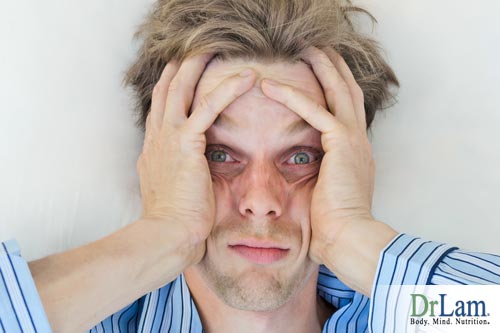 Our biological clock is very sensitive to internal and external cues so it can become easily desynchronized from a number of different factors:
Our biological clock is very sensitive to internal and external cues so it can become easily desynchronized from a number of different factors:
Many aspects of our molecular clock regulate the levels of neurotransmitters in our system, including the level of serotonin. A malfunctioning clock can thus lead to impaired neurotransmission. And the converse is true in that impaired neurotransmission may affect our molecular clock’s synchronization. Whether a malfunctioning molecular clock is cause or effect is up for debate. However, many psychiatric conditions and disorders, including depression, bipolar disorder and schizophrenia are linked to disruptions in circadian rhythms.
When psychiatric disorders are treated with pharmaceutical drugs the medications prescribed often entail restoring balance to the patient’s dysfunctional neurotransmission systems. However, a better outcome might possibly be achieved by addressing the dysfunction also existing in the patient’s molecular clock.
If our neurotransmitters are disrupted or dysregulated, combined with a neuroendocrine dysregulation such as that of Adrenal Fatigue Syndrome, our health can suffer due to the normal biological clocks being disrupted, with symptoms such as:
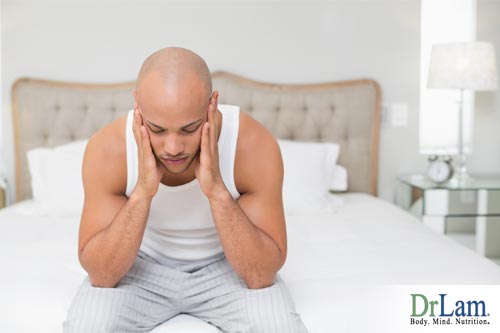 Serotonin is an extremely important neurotransmitter, often referred to as the master neurotransmitter. Serotonin plays a very important part in regulating our biological rhythm and sleep–wake cycles over the course of twenty-four hours. It links the rhythmic activity occurring in the basal forebrain and the preoptic area to the circadian rhythm being signaled by the suprachiasmatic nucleus (SCN). Serotonin essentially links our sleep–wake cycles with our body’s natural twenty-four hour biological rhythm, synchronizing them.
Serotonin is an extremely important neurotransmitter, often referred to as the master neurotransmitter. Serotonin plays a very important part in regulating our biological rhythm and sleep–wake cycles over the course of twenty-four hours. It links the rhythmic activity occurring in the basal forebrain and the preoptic area to the circadian rhythm being signaled by the suprachiasmatic nucleus (SCN). Serotonin essentially links our sleep–wake cycles with our body’s natural twenty-four hour biological rhythm, synchronizing them.
The symptoms occurring when someone is deficient in serotonin are:
When serotonin levels are abnormally low there is an inadequate supply and certainly no surplus to convert to melatonin. This results in difficulty falling asleep at night, commonly referred to as night owl syndrome. This is more common than having difficulty staying asleep, although someone can suffer from both. When someone is experiencing excessive worry and obsessive thoughts, these alone makes it difficult to fall asleep and being awake very unpleasant. This condition is often genetically passed and of a longstanding nature, although it may become more problematic over time as the biological rhythm undergoes prolonged disruption.
In addition to the symptoms listed above, when someone is suffering from a depletion of serotonin they also frequently display the following symptoms:
The biological precursor to serotonin, 5-HTP, can be used to increase serotonin in the body. When you first begin supplementing with 5-HTP you should take a very low dose, gradually working your way up. The right dose depends on the individual, their needs and what their body can tolerate. The dosage can vary from 50 to 300 mg per day in divided doses.
Our bodies maintain a balance in terms of serotonin and cortisol production. The more serotonin we have present, the more cortisol our body produces and vice versa. Our adrenal glands produce cortisol and as such contain receptors that can sense how much serotonin is in our bloodstream at any given time. When the adrenal glands are exposed to serotonin they release cortisol into our bloodstream. This means that by taking 5-HTP, which will increase the levels of serotonin, you can increase the body’s cortisol levels. This may not be beneficial for those with AFS, depending on their stage level. Because 5-HTP can raise cortisol, 5-HTP usage should be carefully considered if cortisol is high as in early stages of AFS. Most with advanced AFS have low cortisol so 5-HTP can be helpful in such cases.
Large doses of 5-HTP, however, may cause nausea on an empty stomach, so 5-HTP is best taken with a snack or beverage. These symptoms may only occur at certain points in the day, e.g., at bedtime and not during the day, during the night or in the early hours of the morning if more is taken then.
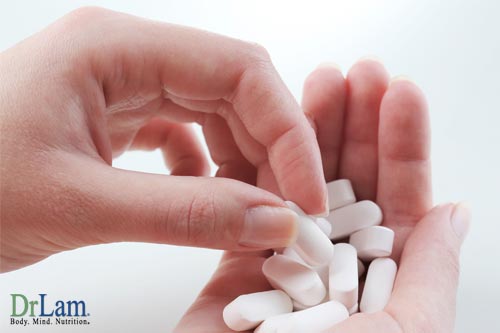 When taken in extremely high doses 5-HTP can cause serotonin toxicity or serotonin syndrome, and this can literally be fatal. Serotonin syndrome can occur if you are taking prescription medications, particularly antidepressants that affect the body's level of serotonin. The greatest risk occurs if you are taking two or more drugs and/or supplements together that influence serotonin. The most commonly prescribed class of antidepressants, which work by increasing serotonin, is the serotonin reuptake inhibitors (SSRIs). These include Celexa, Lexapro, Paxil, Prozac, and Zoloft. The condition is more likely to occur when you first start a medicine or increase the dose.
When taken in extremely high doses 5-HTP can cause serotonin toxicity or serotonin syndrome, and this can literally be fatal. Serotonin syndrome can occur if you are taking prescription medications, particularly antidepressants that affect the body's level of serotonin. The greatest risk occurs if you are taking two or more drugs and/or supplements together that influence serotonin. The most commonly prescribed class of antidepressants, which work by increasing serotonin, is the serotonin reuptake inhibitors (SSRIs). These include Celexa, Lexapro, Paxil, Prozac, and Zoloft. The condition is more likely to occur when you first start a medicine or increase the dose.
L-theanine is another amino acid and a precursor to serotonin. It also helps in the production of GABA and dopamine. Theanine is related to another nonessential amino acid, glutamine. It is considered to be psychoactive since it has the ability to penetrate the blood-brain barrier. As an alternative to GABA or L-glutamine to support a calming of the brain, one can take the amino acid L-theanine. L-theanine is converted to several useful calming and mood-elevating substances in the brain, including GABA. Therefore, one can use theanine as a kind of bank shot to bypass the blood brain barrier issue with respect to GABA.
Because L-theanine is known for helping to relieve stress and provide relaxation it is used in some sleep remedies in conjunction with low dose 5-HTP, GABA, melatonin, and calming herbs like passionflower and valerian root.
Recommended dosage of theanine: Take 100 to 400 mg in divided doses daily. Those with advanced AFS need to be on alert for paradoxical reactions. Stop supplementation if this occurs.
The pineal gland produces melatonin, which is thought to influence our body’s biological rhythm and internal processes helping all the bodily systems work in a coordinated manner. When the internal systems become disorganized or out of sync the body becomes more vulnerable to disease. The levels of melatonin in the bloodstream fluctuate throughout the day, but surge during nighttime when it’s dark outside and it’s time for sleep.
The common symptoms of a melatonin deficiency are:
Melatonin has become popular among those seeking a natural sleep aid. When taking melatonin supplements you need to be careful to take the correct dose. There are those that can absorb and assimilate melatonin very easily and can benefit from just a fraction of a milligram. Others need to take 50 mg to achieve the desired effect. The resulting effect is not at all linear so a period of trial and error is needed by an experienced clinician to determine the proper dosage. People experiencing a hangover in the morning after taking melatonin should try taking it two hours before bedtime rather than right at bedtime.
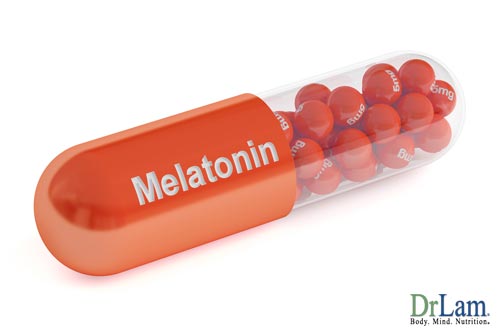 Melatonin does not work in the same manner as a sleeping pill or even 5-HTP because melatonin supplements will only be effective in producing a sedative effect if the levels of melatonin in the user are already low to begin with.
Melatonin does not work in the same manner as a sleeping pill or even 5-HTP because melatonin supplements will only be effective in producing a sedative effect if the levels of melatonin in the user are already low to begin with.
Melatonin is a hormone naturally produced in the body from serotonin, but since 5-HTP is a precursor for serotonin it can increase the levels of melatonin in the body. In order for the body to produce melatonin along with the necessary cofactors and coenzymes, the body needs a certain level of serotonin to use as a primer. Many people need a certain level of serotonin in their body to relax enough to fall asleep. When the body produces melatonin after sleep has been initiated, it helps the person remain asleep.
When your body is not producing enough melatonin you can suffer from mood disorders, anxiety, insomnia, lowered basal body temperature, suppressed immune system, and an elevated estrogen/progesterone ratio. When your body is producing too much melatonin you can suffer from low thyroid and adrenal function, seasonal affective disorder (SAD), hypotension, and a lowered estrogen/progesterone ratio.
Melatonin and serotonin work together in sync. Serotonin is the powerful neurotransmitter from which melatonin is derived and is involved in a number of physiological processes which are central to our health, including the regulation of blood-pressure, our perception of pain, as well as some neuropsychological functions like memory, mood and appetite. Just as with melatonin, serotonin levels affect a variety of endocrine activities performed by the pituitary gland, the hypothalamus and others.
For the most part, serotonin and melatonin do not act in the body together or at the same time and exert their effects based on the body's biological rhythm. Melatonin is actively involved at night and serotonin does its work during the daytime. Both are involved in moderating endocrine functions, but serotonin seems to have a negative influence on the cardiovascular system when its levels in the bloodstream are too high. There have been cases of this causing a narrowing of blood vessels and blood clotting as well as other adverse effects. Unlike with melatonin the levels of serotonin in our body do not decrease, as we get older, but increases relative to other neurotransmitters and hormones.
Scientists who have studied aging and the elderly think that this imbalance between melatonin and serotonin, which is age-related, may be as important a factor in the aging processes as the lack of melatonin seems to be, especially as it relates to heart disease. Without enough melatonin acting as a scavenger for free radicals during the night, blood vessels may become more damaged, which stimulates the release of additional serotonin.
Research has revealed that people suffering from severe depression are lacking enough serotonin, norepinephrine and dopamine, three essential neurotransmitters actively used by the brain. Therefore, the link between serotonin and melatonin, along with them both being dependent on the body clock might explain the depression felt by those suffering from seasonal affective disorder (SAD).
GABA is a powerful neurotransmitter that performs an inhibitory function, often being called nature’s Valium. When the body is excreting high levels of GABA this indicates the body is experiencing excitatory overload due to the higher demand for GABA to balance out the excess excitatory neurotransmitters like glutamate. Low levels of GABA are linked with hypothalamus-pituitary axis feedback dysfunction and adrenal distress.
 Symptoms of a GABA deficiency include:
Symptoms of a GABA deficiency include:
If GABA is deficient in the body it can be supplemented by using a supplemental form of GABA. Each of us may have different amounts of GABA in the brain that is considered normal. There are no accepted medical tests to determine if we have too much or too little GABA activity. Excessive use of street drugs, alcohol, and prescription drugs are associated with low GABA activity and thus a state of excitation. Caffeine, in particular, inhibits the release of GABA and allows the increase of excitatory neurotransmitters.
GABA’s primary function is to neutralize adrenaline. A deficiency in GABA can go along with a deficiency in serotonin and melatonin or cause problems with sleep on its own. This is when muscle tension and other symptoms of GABA deficiency like being stressed can disrupt sleep. The primary symptoms associated with this deficiency are of feeling overwhelmed, overstressed without the ability to loosen up and relax, and feeling burned out with tense or stiff muscles.
When people with a GABA deficiency take sleep medication they may have panic attacks. People with this condition are likely to respond best when they take benzodiazepines.
If GABA deficiency is suspected, 100 to 500 mg of GABA may be considered. You can take this with or in place of melatonin or tryptophan. Avoid taking high doses of 750 mg at one time as it may do the opposite of what you need, which is cause anxiety. For those few who do not respond to GABA, you may want to try I-theanine, which can result in a calming effect.
Taurine. Taurine is an amino acid that calms the nervous system by facilitating the production of the neurotransmitter GABA. By helping to raise GABA levels, taurine allows the body to manage anxiety so that your thoughts don't go spiraling out of control and you don't experience the associated cortisol and adrenaline spikes seen in Adrenal Fatigue Syndrome.
Take taurine for better sleep, but make sure you are getting a magnesium supplement that your body can absorb as well. Together these nutrients are the answer to abolish stress, calm the nervous system, help you sleep better, and regain control of your biological rhythm. You will also have an overall improved mood. People who are deficient in either magnesium or taurine are at greater risk for depression and poor motivation.
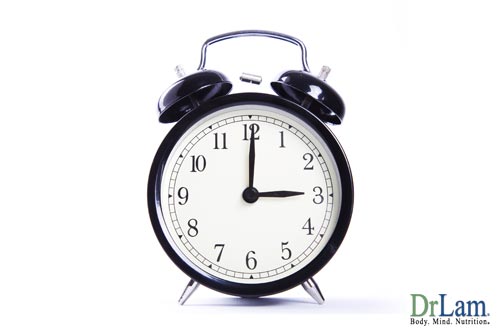 Cortisol has a very interesting and distinctive circadian biological rhythm. They reach their lowest levels at about midnight and then begin rising around 2 to 3 a.m., reaching their peak at about 8:30 a.m. at which time they begin slowly decreasing back to the lowest point, which completes the natural biological rhythm cycle in twenty-four hours.
Cortisol has a very interesting and distinctive circadian biological rhythm. They reach their lowest levels at about midnight and then begin rising around 2 to 3 a.m., reaching their peak at about 8:30 a.m. at which time they begin slowly decreasing back to the lowest point, which completes the natural biological rhythm cycle in twenty-four hours.
The regulation of cortisol release, or glucocorticoid, is determined by the action of the HPA axis. The HPA axis receives information coming in from the central pacemaker controlling the circadian release of the corticotrophin-releasing hormone (CRH) going into the paraventricular nucleus, which is also set off by emotional and physical stressors. Then the CRH triggers the release of the adrenocorticotrophic hormones (ACTH) coming from the corticotrophin cells located in the anterior pituitary, followed by glucocorticoid cortisol coming from the adrenal cortex. Cortisol then exerts its inhibitory effects at hypothalamic and pituitary levels, performing in a classic negative feedback loop, although the SCN receives no feedback.
Our adrenal gland has a circadian clock whose job it is to set specific intervals of time during the natural biological rhythm when it most efficiently responds to ACTH. The splanchnic nerve regulates all of this. Genes for the clock are expressed in a rhythm in the zona fasciculate and zona glomerulosa, as well as all the pathways characteristically used by the adrenal gland, like for the production of the catecholamines, steroid metabolism, and our circadian clock regulates this biological rhythm. The expression of the clock genes by the adrenal gland reveals a six-hour phase delay related to the SCN, which is primarily induced through the SCN, without any associated activation of the HPA axis. This expression of genes goes along with biological rhythm of the secretion of brain and plasma cortisol.
A number of separate episodes of cortisol secretion occur according to the body's biological rhythm over the span of a twenty-four hour day totaling four different and unequal temporal phases. These phases are experienced as a period of little secretory activity, during which time there is negligible cortisol secretion, which occurs four hours before the onset of sleep and two hours after the onset of sleep. There is a preliminary episode of nocturnal secretions around the third to fifth hours of sleep and a primary phase of secretions with three to five episodes happening during the sixth to eighth hours of sleep, which continue through to the first hour of being awake. There are four to nine intermittent secretory activity episodes while awake that occur in the second to twelfth hours of being awake.
Whenever we are under extreme stress the levels of cortisol rise. Unrelenting stress can cause Adrenal Fatigue Syndrome. In its early stages, a state of high cortisol output exists. This can even occur long after the events causing the stress have been resolved or with long standing perceived stress and not actual stress. When the cortisol disturbance happens at night, when the levels are supposed to be at their lowest, the type of insomnia experienced is an alert, which feels like your body is ready to do something, or a state of hyper-vigilance and agitation, or you might feel shocked or suddenly startled awake in the middle of the night. Both SOI and SMI can be expected.
 Phosphatidylserine (PS) is a natural compound with cortisol lowering capabilities. This comes from soy lecithin, which is a component found in cell membranes. PS is known to help in the repair of damaged cell membranes and can repair the cortisol receptors in the hypothalamus. High levels of cortisol can damage the receptors, impairing the ability of the hypothalamus to determine when cortisol levels are too high and then correct the problem. The stronger the phospholipid bilayer in the cell, the more efficient the transport of the neurotransmitters can be. PS can be effectively used to calm elevated levels of cortisol at night and help induce sleep. However, for some unexplained reasons that are not well understood, it is common to have paradoxical responses. The culprit may lie in receptor disorder, liver congestion resulting in slow deranged metabolism, or extracellular matrix congestion. This phenomenon is seen frequently in those in advanced stages of AFS. The weaker they are, the higher prevalence of paradoxical reaction.
Phosphatidylserine (PS) is a natural compound with cortisol lowering capabilities. This comes from soy lecithin, which is a component found in cell membranes. PS is known to help in the repair of damaged cell membranes and can repair the cortisol receptors in the hypothalamus. High levels of cortisol can damage the receptors, impairing the ability of the hypothalamus to determine when cortisol levels are too high and then correct the problem. The stronger the phospholipid bilayer in the cell, the more efficient the transport of the neurotransmitters can be. PS can be effectively used to calm elevated levels of cortisol at night and help induce sleep. However, for some unexplained reasons that are not well understood, it is common to have paradoxical responses. The culprit may lie in receptor disorder, liver congestion resulting in slow deranged metabolism, or extracellular matrix congestion. This phenomenon is seen frequently in those in advanced stages of AFS. The weaker they are, the higher prevalence of paradoxical reaction.
The phosphorylated type of serine seems to have a much stronger ability to lower cortisol levels. Bioactive hydrolyzed peptide is another effective supplement. Holy basil may help as well as magnolia bark and reishi. To treat the kidneys and adrenal glands acupuncture and/or Chinese herbs are to be considered, especially in cases where cortisol levels are high during the day and during the night.
Do not take supplements that tend to be stimulating or are known to raise cortisol levels, such as ashwagandha, licorice, maca, green tea, rhodiola. Insomnia that is caused by high levels of cortisol is not solved, but instead exacerbated by taking l-tyrosine, a stimulating amino acid that converts into noradrenaline and adrenaline.
If benzodiazepines are used as sleep aids and an addiction develops, these need to be maintained or tapered off while making sure all of the recommended nutrients are provided, guided by medical professionals.
There are three catecholamines in our body: dopamine, norepinephrine (neurotransmitter for the sympathetic nervous system), and epinephrine (also called adrenaline). When your system is overloaded with catecholamines you will experience the following symptoms:
Dopamine is the neurotransmitter that helps us concentrate and focus. When the ratio between dopamine and serotonin is out of balance you will typically have difficulty focusing, remembering things like where you left your keys and you may find yourself daydreaming. Dopamine is involved in controlling the brains center of reward and pleasure as well as playing a role in regulating our sleep.
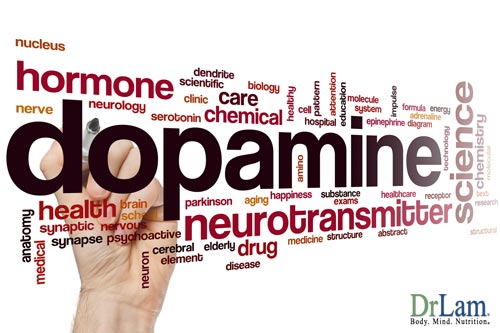 Researchers have found that dopamine receptors show up in the pineal gland only towards the end of nighttime. When dopamine interacts with its own receptors the effects of norepinephrine are stopped, which causes the production and the release of melatonin to become lower. This biological rhythm signal indicates to the brain that it is time to wake up.
Researchers have found that dopamine receptors show up in the pineal gland only towards the end of nighttime. When dopamine interacts with its own receptors the effects of norepinephrine are stopped, which causes the production and the release of melatonin to become lower. This biological rhythm signal indicates to the brain that it is time to wake up.
Norepinephrine acts as an excitatory neurotransmitter in the body to stimulate body processes. When norepinephrine and epinephrine activate the body’s sympathetic nervous system our ability to concentrate and focus are affected. When levels of norepinephrine are elevated, we can experience insomnia, irritability, racing thoughts, headache, feeling wired, and anxious.
Norepinephrine is chemically derived from dopamine and carries out its functions by attaching to the receptors for dopamine in cell membranes. Chronic stress puts the HPA hormonal axis in overdrive as AFS progresses. In advanced AFS, the HPA axis becomes overburdened and disrupted. The body then activates the sympathetic nervous system (SNS) to keep in high gear in order to handle stress. Norepinephrine is the NT responsible for the SNS. A chronically high norepinephrine is called sympathetic overtone. The body is constantly on alert and unable to relax with a disrupted biological rhythm. Sleep becomes difficult even though the body is tired, with frequent awakenings a few hours later as the body is repeatedly put on alert by excessive norepinephrine. Many common street drugs work wonders by mimicking norepinephrine in the brain, causing a mental high.
Adrenaline (also called epinephrine) is derived from norepinephrine and is another excitatory neurotransmitter, but this one is involved in our body’s fight or flight protective response. Adrenaline regulates certain brain functions like heart rate, blood pressure and metabolism.
When we have lower levels of adrenaline in our body, we can experience depression, fatigue, burnout, dizziness, and poor recovery from illness, unable to deal with stress.
If the adrenal glands are overstimulated for a long period of time, as occurs in advanced stages of Adrenal Fatigue Syndrome, this can set off a massive release of adrenaline as the body becomes engaged in the fight or flight response. The symptoms include panic attack, nervousness, and sense of impending doom, atrial fibrillation and postural orthostatic tachycardia. Visits to emergency rooms are common only to be pronounced all is normal and sent home to rest.
Glutamate is an excitatory neurotransmitter. This one, to a large extent, is involved in learning and memory.
Symptoms associated with elevated levels of glutamate include depression, panic attack, anxiety, headache, and irritability.
Symptoms associated with low levels of glutamate include lethargy, depression, memory loss, and insomnia.
GABA, glutamine and glutamate are intimately involved in a cyclic biological rhythm that ultimately determines the level of each in the body. Neurons are not able to perform new synthesis of the neurotransmitters glutamate and GABA from glucose. The glutamate-GABA-glutamine cycle is a metabolic pathway that describes the release of glutamate or GABA from neurons, which are then taken up into astrocytes (star shaped glial cells). In return, astrocytes release glutamine to be taken up into neurons for use as a precursor to the synthesis of glutamate or GABA. This biological rhythm therefore determines whether more GABA or more glutamate is produced.
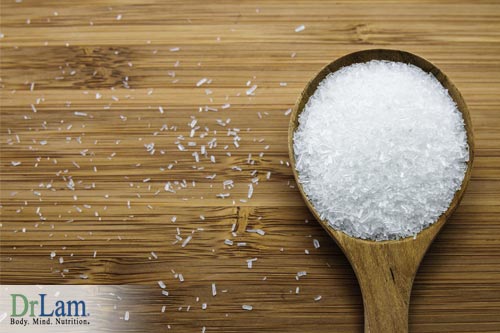 Think of glutamic acid, glutamine and GABA as three members of a close-knit family with three very different personalities. Glutamic acid is a nonessential amino acid (the body can manufacture it when things are working right) that is also an excitatory neurotransmitter. Its cousin GABA has an opposite personality—it calms our nerves and relaxes us. Glutamine is the source for both of them—the body can make either glutamic acid or GABA from glutamine, depending on what is needed. Glutamine therefore is the gatekeeper chemical that determines the amount of GABA and glutamate levels to be produced to keep them in balance.
Think of glutamic acid, glutamine and GABA as three members of a close-knit family with three very different personalities. Glutamic acid is a nonessential amino acid (the body can manufacture it when things are working right) that is also an excitatory neurotransmitter. Its cousin GABA has an opposite personality—it calms our nerves and relaxes us. Glutamine is the source for both of them—the body can make either glutamic acid or GABA from glutamine, depending on what is needed. Glutamine therefore is the gatekeeper chemical that determines the amount of GABA and glutamate levels to be produced to keep them in balance.
If you are in a state of anxiety caused by sympathetic overtone (as commonly seen in advanced AFS) or a severe inflammatory state, glutamine’s focus will be shifted automatically to make more GABA to calm the body in theory, which will in turn lower your glutamate level, and help calm you down. Unfortunately, this pathway can be disrupted because an inflammatory state can cause dysregulation of the biological rhythm itself, leading to excess production of glutamate levels instead. This is why it is very hard to predict the overall net effect of glutamine and it is not unusual for a variety of outcomes when taken by seemingly homogeneous populations. This happens most frequently in a body with chronic weakness, such as that of AFS. This may explain why some people do well with GABA supplements, but others can have paradoxical reactions. Similarly, glutamine is also a support for GI health, but it may increase glutamate and cause anxiety as well.
Generally speaking, if you keep the total amount of glutamate in your body under control, you can prevent excitation responses. For example, excessive glutamate in Chinese food prepared with flavoring enhancer monosodium glutamate (MSG), dubbed the Chinese restaurant syndrome can cause nervousness, headaches, numbness, facial pressure, and anxiety.
Virtually every food contains glutamate. It's a major component of protein rich food like meat, eggs, poultry, milk, cheese, and fish. Glutamate or glutamic acid is also ubiquitous in grain, beans, vegetables, mushrooms, fruits, nuts, and sea vegetables. Foods with high levels of glutamate include Parmesan cheese, soy sauce, walnuts, fresh tomato juice, grape juice, peas, mushrooms, broccoli, tomatoes, oysters, and corn.
 Histamine is another neurotransmitter and this hormone plays a role in controlling our sleep–wake cycle. It is both a neurotransmitter as well as an immunomodulator. Depending on where it is found in the body, and what receptor it interacts with, histamine can elicit a multitude of reactions. There are four types of receptors, numbered H1 to H4. Each are found in different parts of the body and have distinctly different effects on the body's biological rhythm when activated.
Histamine is another neurotransmitter and this hormone plays a role in controlling our sleep–wake cycle. It is both a neurotransmitter as well as an immunomodulator. Depending on where it is found in the body, and what receptor it interacts with, histamine can elicit a multitude of reactions. There are four types of receptors, numbered H1 to H4. Each are found in different parts of the body and have distinctly different effects on the body's biological rhythm when activated.
When our histamine levels are elevated we may suffer from:
Histamine is usually metabolized in the intestines and liver. However, some individuals may have low levels of the required enzymes to metabolize histamine and thus have increased circulating histamine that can disrupt the body's biological rhythm. Histamine is typically found in foods that have been fermented or highly processed. Fermented cheeses such as cheddar and Gouda are high in histamine. Other dairy products such as yogurt and buttermilk also contain elevated histamine amounts. Salami, pepperoni, sausage, and other processed meats are also high in histamine. Vegetables such as tomatoes, spinach, and eggplant contain increased histamine compared to other vegetables. Berries have been shown to be high in benzoates, which release histamine. Spices such as cinnamon, cloves, and nutmeg also contain benzoate and release histamine when ingested. These are usually not an issue because the body metabolizes them automatically without a problem.
Histamine-releasing neurons are located in the hypothalamus. From here, they project to all other brain areas. The neuron-firing rate varies across the sleep–wake cycle. The highest occur during waking and lowest during rapid eye movement sleep. Stress, dehydration, or hypoglycemia is typically experienced in advanced AFS. All three conditions trigger increased histamine release. Once released histamine activates four types of receptors. The central histamine system is involved in many central nervous system functions: arousal; anxiety; activation of the sympathetic nervous system; HPA axis hormonal system.
Dysregulated histamine balance can upset biological rhythm. Fortunately, excessive histamine in the body can be neutralized by quercetin and bromelain.
Quercetin can be considered the king of flavonoids. It is an excellent natural antihistamine that can help balance the body's biological rhythm. It also interferes with the pain promoting inflammatory histamine that is generated in the body in many autoimmune diseases including rheumatoid arthritis and colitis. In addition to its antihistaminic effect, studies have shown that it is also able to fight off an enzyme that neutralizes cortisol, a natural anti-inflammatory chemical produced by the body. You can get quercetin by drinking more unfermented green tea as well as red wine. Apples, onions, tomatoes, green peppers, as well as broccoli are all excellent sources of quercetin. However, as a large amount of it is required to produce a positive effect, it is better to take a quercetin supplement.
Bromelain is an enzyme that is found in pineapple stems. Its primary activity is to reduce inflammation and promote healing, especially in muscles and joints. As such, it is popular and is used widely in sports medicine and trauma management. Bromelain’s anti-inflammatory property also plays a significant role in the management of asthma, arthritis, colitis, and other allergy responses. It should be noted that only high potency and high quality supplements should be used in a therapeutic setting. It should be taken on an empty stomach along with quercetin.
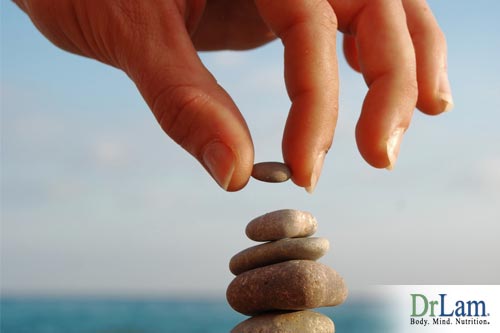 Biological rhythm disruptions may present classically as insomnia, but the underlying circadian disruption is a twenty-four seven phenomena. Restoring biological rhythm balance must start with understanding of the physiology behind the seven phases of biological rhythm during the day, starting in the morning and continues to bedtime. At each phase, specific steps need to be taken in terms of personalized supplementation, diet, and lifestyle modulations tailoring to each body’s specific clinical neurotransmitter volume, hormonal balance, receptor function, toxic load, body sensitivity, and assimilation capacity at that point in time to rebalance proper biological rhythm. The goal is to restore neurotransmitter balance to a state appropriate for that phase during that specific time of day to mimic the natural cycle as closely as possible.
Biological rhythm disruptions may present classically as insomnia, but the underlying circadian disruption is a twenty-four seven phenomena. Restoring biological rhythm balance must start with understanding of the physiology behind the seven phases of biological rhythm during the day, starting in the morning and continues to bedtime. At each phase, specific steps need to be taken in terms of personalized supplementation, diet, and lifestyle modulations tailoring to each body’s specific clinical neurotransmitter volume, hormonal balance, receptor function, toxic load, body sensitivity, and assimilation capacity at that point in time to rebalance proper biological rhythm. The goal is to restore neurotransmitter balance to a state appropriate for that phase during that specific time of day to mimic the natural cycle as closely as possible.
Because most are already weak physically at this time from long standing insomnia, any biological rhythm rebalance has to progress slowly, especially in the beginning. Those who are in advanced stages of AFS are particularly vulnerable. Paradoxical or exaggerated reaction is common and has to be avoided. Expert close guidance and monitoring is required. Immediate adjustments are made in real time if possible. The rebalancing of the body's biological rhythm process usually takes a few months in experienced hands.
Awakening Rhythm from 6 to 9 a.m. Some people wake up refreshed in the morning having had a good night’s sleep. Others wake up still tired, but begin to perk up after having breakfast and beginning their morning routine. Still others wake up refreshed, drag through this phase. Regardless of where you fall, the body can start its BR rebalancing effort in this phase
Increase energy using macro and micronutrition principles. Have a good breakfast when you wake up and start your day’s activities. NTs need to be on an excitatory bias to get your body moving. The BR should be clear of yesterday’s burden from the overnight rest. The body is fresh as we start the new day. Start with some Adrenal Circulation and Adrenal Restorative Exercises to help the biological rhythm. Nutritional supplementation with the right compounds is key to help the restorative process progress initially.
Recommendations for more energy in the morning:
Morning Rhythm from 9 a.m. to noon Your goal is to sustain your energy throughout the morning until lunch, while avoiding both anxiety and fatigue, which can occur in late morning as energy starts to wane and symptoms of hypoglycemia may appear. The overall neurotransmitter balance should become neutral as the awakening phase wears itself out.
Recommendations to support your bodily functions as you awaken continue. As the morning progresses, enjoy a relaxing cup of warm broth or a light nutritious snack during this phase to prevent any BR disruption from a metabolic imbalance. Supporting the spleen at this time is important so you should have lentils or yams seasoned with cinnamon. Adrenal Yoga Exercise is recommended during this time. Adrenal Breathing Exercise is particularly important in midmorning to tone down any excessive NT excitation carryover from the awakening phase, such as those taking in coffee, glandular, and stimulatory herbs like ashwagandha, rhodiola, maca, and ginseng.
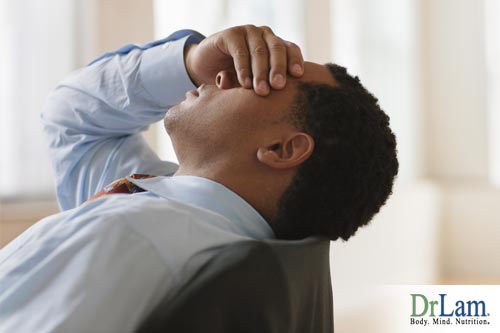 Anxiety has a tendency to surface in late morning. Any liver or extracellular matrix congestion can make matters worse. Supplement considerations should focus on neutralizing any excitatory NT tone as well as relieve liver and extracellular matrix burden. Combat this and stabilize your neurotransmitters with these:
Anxiety has a tendency to surface in late morning. Any liver or extracellular matrix congestion can make matters worse. Supplement considerations should focus on neutralizing any excitatory NT tone as well as relieve liver and extracellular matrix burden. Combat this and stabilize your neurotransmitters with these:
Lunch Rhythm from noon to 2 p.m. Make sure that you have a good lunch with enough calories to sustain you through the entire afternoon. The food choice bias is towards more protein and fat and less carbohydrate. Salads with chicken are excellent choices for lunch. You should also supplement with the proper micronutrients, focusing on supporting continuous energy, preventing an imbalance in metabolism, which can bring on a food coma that occur soon after lunch and thus disrupted BR. Your NT balance should continue to be neutral and allow the nutrients from lunch to give you enough energy without depending on the excitatory neurotransmitters to start the afternoon activities.
Recommendations for this phase: It would be best to enjoy a nice relaxing lunch and take a twenty-minute power nap immediately thereafter. The heart doesn’t respond well to emotional or physical heat during this phase so we need to avoid:
Afternoon Rhythm from 2 to 5 p.m. You need to support your energy flow in midafternoon and try to prevent any slumps in energy that could set off an alarm response causing an excessive release of norepinephrine and adrenaline and trigger an adrenal crash. Have an afternoon snack that includes complex carbohydrates. Take a twenty to thirty minute afternoon nap around 3 p.m. The NT balance should be a bit excitatory to make sure your body has enough reserve energy to sustain you throughout the afternoon if it’s not possible to take a nap. The net BR balance is maintained on a cruising mode.
Recommendations for sustaining you throughout the afternoon: It’s important to have a strong bladder during this time (for storing and secreting urine) and the bladder is nourished with salty foods so have a bowl of soup with a lot of liquid broth like miso or vegetable. This will keep the bladder and the kidneys (the paired organ) strong.
To combat an afternoon slump in energy and avoid metabolic imbalance:
Dinner Rhythm from 6 to 9 p.m. Gradually reduce your excitatory NT tone through dinnertime to ensure the smooth assimilation of food without any metabolic dysregulation, which could trigger an internal inflammation. Overall net your NTs should be slightly inhibitory in order to maintain a neutral BR, setting the stage for slowing down at the end of the day.
Recommendations for relaxing and easing into a sleep mode: You may take some time for meditation, reading, light stretching or cuddling.
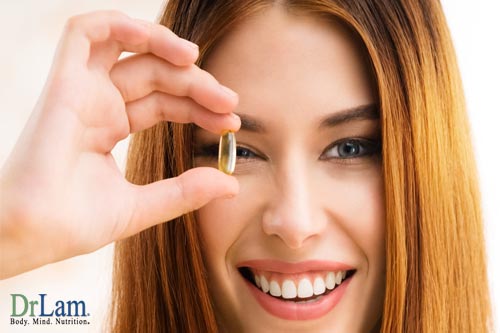 To combat early evening anxiety:
To combat early evening anxiety:
Those suffering from high cortisol at night should commence cortisol lowering with natural compounds that have a lagging effect such as phosphatidylserine during this phase. Continue Adrenal Breathing Exercises.
Sleep Onset Rhythm from 9 p.m. to 2 a.m. This is the time for the body to unwind. Your NTs should be moving towards a more inhibitory tone with acetylcholine acting as the main NT needed for the parasympathetic nervous system to maintain the proper state for digestion and rest.
Take a small snack rich in protein and fat right before sleep. Almond milk and nuts are excellent choices. This will help stabilize blood sugar and prevent metabolic imbalances that can occur a few hours later.
Recommendations to combat sleep onset insomnia:
Sleep Maintenance Rhythm from 2 to 6 a.m. At this time, the body requires an ample supply of the needed inhibitory NTs, which combat any residual excitatory stimuli that may cause wakefulness during the night. The biological rhythm is prevented from stimulation. Metabolic imbalance can also cause frequent awakenings and your bedtime snack should be helpful in preventing this from triggering sleeplessness during this period.
Recommendations to combat sleep maintenance insomnia:
Proper timing of taking sleep aids is important. Glycine, for example, should be taken at bedtime and not at the time of awakening in the middle of the night because there is a lagging effect. We can also take advantage of time release forms of melatonin and 5HTP to their onset of action can be timed a few hours after going to sleep.
This phase is the most challenging because frequent awakenings and the inability to return to sleep is a sure recipe for fatigue the next day. Higher and frequent doses of supplementation and snacks throughout the night may be required. The Adrenal Breathing Exercise is very valuable at this time.
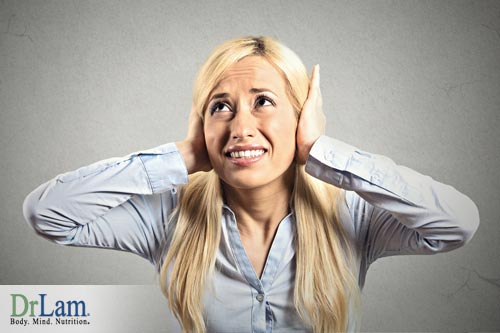 Proper biological rhythm balance, especially in cases of severe insomnia, requires a comprehensive plan addressing the needs of each of the seven temporal biological rhythm phases of the day in order to maintain an overall daily rhythm that is natural, stable and consistent. This requires extensive clinical experience. Even in the best of hands, some trial and error is required due to the lack of accurate laboratory tests for guidance in addition to each body’s unique setting.
Proper biological rhythm balance, especially in cases of severe insomnia, requires a comprehensive plan addressing the needs of each of the seven temporal biological rhythm phases of the day in order to maintain an overall daily rhythm that is natural, stable and consistent. This requires extensive clinical experience. Even in the best of hands, some trial and error is required due to the lack of accurate laboratory tests for guidance in addition to each body’s unique setting.
Many have tried self-navigating through a variety of natural compounds but failed to restore BR properly. Here are five common reasons for failure:
First, most are not versed in understanding the specific physiological pathway of each nutrient, resulting in the wrong choice. For example, taurine has NT inhibitory effects, but it is also a natural diuretic and increases excretion of water from the body. Taking it at nighttime may help sleep. However, it can also lead to increased awakenings due to frequent urination. Another example is 5-HTP. It tends to work better in the evening while GABA is better during the day. Proper selection of nutrient timed specifically for each phase will greatly enhance success.
Second, the approach of using targeted single nutrients works only in the mildest of cases. For example, melatonin alone may work well in early stages of AFS when biological rhythm disruption is mild. By the time biological rhythm is suspected in a setting of advanced AFS, insomnia is already well entrenched. Many have already been put on sleep medications by their physicians after failure of sleep aids. Different nutritional cocktails specific for the needs of each of the seven temporal biological rhythm phases of the day is usually required in order to reset the biological rhythm properly, especially in the beginning.
Thirdly, dosage requirements vary greatly from person to person. Melatonin at 3 mg may work well for one person but is completely inadequate for another who may do much better at a lower dose of say, 0.3 mg, or a higher dose of 30 mg. In other words, some compounds, like melatonin, are not linear in their dose response curve. More is not necessarily better.
Fourthly, certain compounds are more effective when taken by various delivery methods. For example, sublingual melatonin is more effective, especially in high doses, than capsules or pills because they contain less inert substances called binders and fillers required during the manufacturing process. Excessive binders and fillers can trigger vivid dreams and nightmares in those who have a sensitive pineal gland.
Lastly, proper timing is required to maximize the effectiveness of each natural compound. For example, the phosphylated form of phosphatidylserine (PS) is more effective to lower cortisol at night as compared to the nonphosphylated form. However, there is a four to six hour lag period from time or intake to bio activation. As such, it should be taken at dinnertime well before bedtime to be most effective.
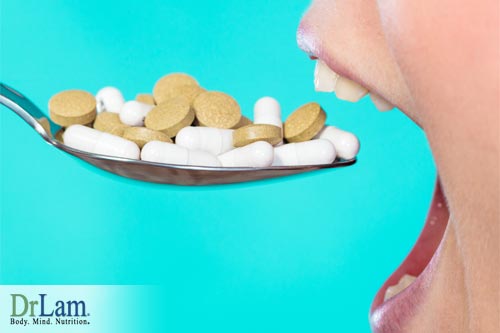 In addition to the above five parameters, blind supplementation without considering to the constitution, stage of AFS, receptor site response, GI assimilation state, sleep medication dependency, extracellular matrix pollution and liver burden are common clinical mistakes resulting in improper dosage and clinical failure. A successful comprehensive BR rebalancing program is highly intricate and requires extensive clinical experience in both BR and AFS. Because dosage varies so widely from person to person, a detailed clinical history is key to assessing the right starting dose and combination of compounds. Most self-directed programs fail not because of the lack of tools but due to operator inexperience, resulting in a worsening outcome over time. Conversely, we are happy to report that most cases of BR and severe insomnia can be improved with natural compounds, when properly structured and executed.
In addition to the above five parameters, blind supplementation without considering to the constitution, stage of AFS, receptor site response, GI assimilation state, sleep medication dependency, extracellular matrix pollution and liver burden are common clinical mistakes resulting in improper dosage and clinical failure. A successful comprehensive BR rebalancing program is highly intricate and requires extensive clinical experience in both BR and AFS. Because dosage varies so widely from person to person, a detailed clinical history is key to assessing the right starting dose and combination of compounds. Most self-directed programs fail not because of the lack of tools but due to operator inexperience, resulting in a worsening outcome over time. Conversely, we are happy to report that most cases of BR and severe insomnia can be improved with natural compounds, when properly structured and executed.
Biological rhythm is a natural phenomena occurring in all healthy living mammals. Disruption can be caused by a variety of factors ranging from stress, neurotransmitter imbalance, and hormonal dysregulation. The classic presentation of BR disruption is insomnia. There are seven temporal BR rhythms during the twenty-four hour day. Their proper balance is critical to a healthy sleep cycle at night. Those suffering from chronic insomnia need to pay attention to these seven temporal phases for complete healing. Natural compounds are available to help, but few people are versed in understanding and planning a complete program to properly rebalance the BR. Thus, most self-navigation efforts fail. Yet with proper supervision and guidance, even the most severe cases of BR can find improvement.
There are many reasons, such as low sperm count, poor sperm quality, anatomical or genetic defects. Usually, a doctor's visit is necessary. Due to the many possible causes, a complete workup is necessary.
Males and females have different sets of hormones. So their imbalance would be different. As a result, the treatments would be different also.
In general with the aging process, it could start around 25-30 years old after peaking in the early twenties. Every hormone has its own decay curve. Replacement usually is not necessary until later on in life unless under special circumstances.
Nausea and fatigue during the first trimester and later periods of pregnancy are common because of the changes happening in the body. If you have kept up a nourishing diet and supplementation during and after delivery, your body should be healthier than before you are pregnant. For Chinese philosophy, the 40 days after deliveries are the best time to rebuild the body.